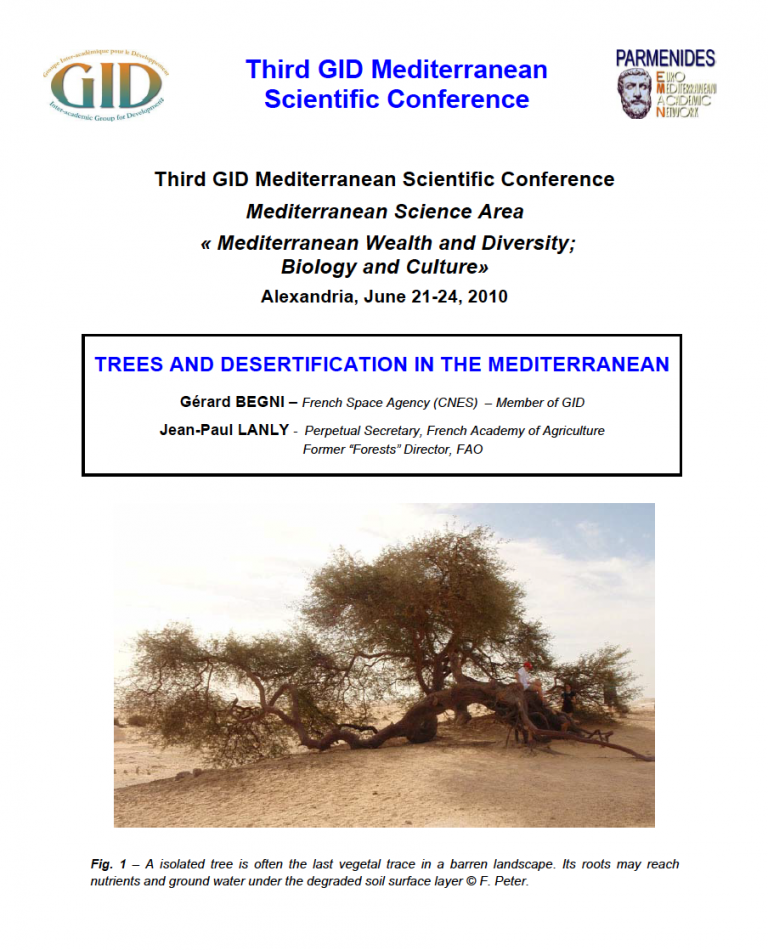Woody vegetation form an important part of most ecosystems, from boreal and humid and temperate to arid and semi-arid zones. Within Mediterranean ecosystems, they interact with other vegetal and animal species in quite complex and specific ways. They strengthen the ecosystems resilience and greatly contribute to the services that they offer. Breaking off these interactions can cause irreversible degradation by leading these ecosystems out of their resilience domain.
When addressing desertification phenomena in the Mediterranean, one must take into account both high economic value trees, more usual economic value trees (cedars, oaks, pines, cypresses) and more “modest” vegetal species: not just trees, but also shrubs, bushes and scrublands of various species which associate various plant species as well as herbaceous species of steppes in which no trees can be found Their covering properties play a crucial role in many Mediterranean regions. Interactions between all these species and desertification processes are very numerous and diverse. Therefore, a perfect knowledge and understanding of these man-made ecosystems and the services that they offer is needed.


